Published online at Louisville, Kentucky USA -
An independent, secular, contemporary journal of political and environmental issues dedicated to peaceful reduction of human impacts on Earth
Published online at Louisville, Kentucky USA -
An independent, secular, contemporary journal of political and environmental issues dedicated to peaceful reduction of human impacts on Earth

BadwaterJournal.com
WHAT UNSUSTAINABLE URBAN GROWTH LOOKS LIKE
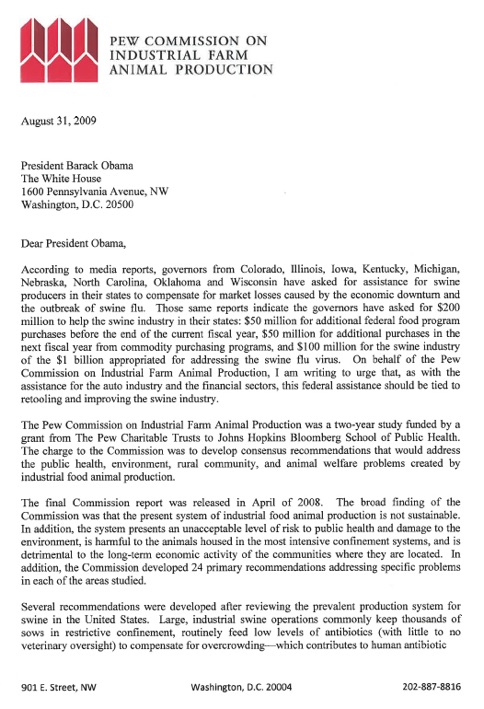
Emergent pathogens Action Plan shields CAFO industrial livestock producers
Obama’s multiprong national action policy provides confidentiality in reporting for CAFOs with infected swine and poultry
(c) APR 26, 2015 Bud Hixson

Supplying the abattoir
Confined animal feeding operations in Kentucky are too cruel
(c) 2015 Bud Hixson
When a pig climbs the chute at the abattoir to be slaughtered the USDA insists that the death be quick and certain beginning with an electric shock that stuns the animal unconscious followed by slashing the carotid artery to drain the body before the animal can regain consciousness. Whats not part of that narrative is the cruelty industrial hog production inflicts on these meat animals prior to the final moment. As a result of the confinement model of operation, mother pigs are kept in steel crates where the litters of piglets nurse on sows that are lame from lack of movement and lying in their excrement. Profit motive drives the design, but recent epidemic disease is causing significant losses of piglets. Between April 2013 and the present it is estimated more than 8 million piglets and swine have been lost to Porcine Epidemic Diarrhea Virus or PEDv. This corona virus has infected confined operations across the U.S. spread through fecal-oral contact.
The Kentucky CAFO system HERE
and its transportation of swine
One of the largest confined hog operations in Kentucky, the Iron Maiden Farm in
western Davies County was recently featured in an expose by the Humane Society as exemplary of the cruelty of CAFOs. Sow pigs are kept in cages until they cannot stand while force bred to produce multiple litters. The piglets died by the thousands of contagious viral infection and parts were ‘fed back’ to the sows to stimulate immunity. Viral infections are wiping out pigs and taking the profits out of CAFOs.
The world is overpopulated at more than seven billion people. Our fundamental failure to formulate and adopt humane and rational population reduction plans leads us to suffer a number of consequences on a global scale. Wars over resources are one example. Climate change is another. Now, industrial scale meat production and resulting anti-biotic resistant bacteria are revealing a vulgar spectacle of animal exploitation while ironically spawning a probable solution for it – pandemic disease. The Plan to combat antibiotic resistant bacteria rolled out by President Obama in March 2015 is too protective of big livestock operations at the expense of transparency in public health issues. The Plan fails to condemn confined animal practices on moral or public health grounds and its tepid provisions don’t take necessary steps to close dangerous mega-CAFOs.
Conspicuous and wasteful consumption of cooked flesh necessitates the use of primary foodstuffs to feed, then slaughter, more than 64 billion animals every year. This scale of resource use for unhealthy, luxury meat is unsustainable and increasingly lethal. In its 2013 Report, Antibiotic Resistance Threats in the United States, 2013 the Centers for Disease Control states:

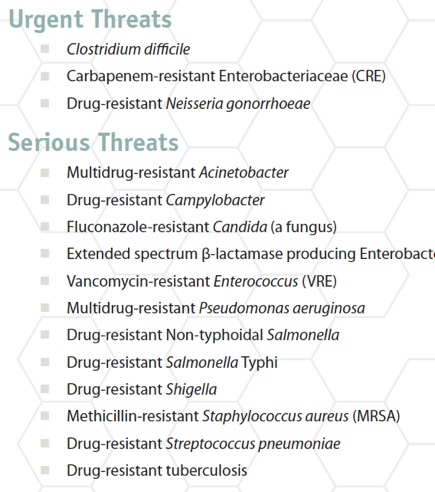
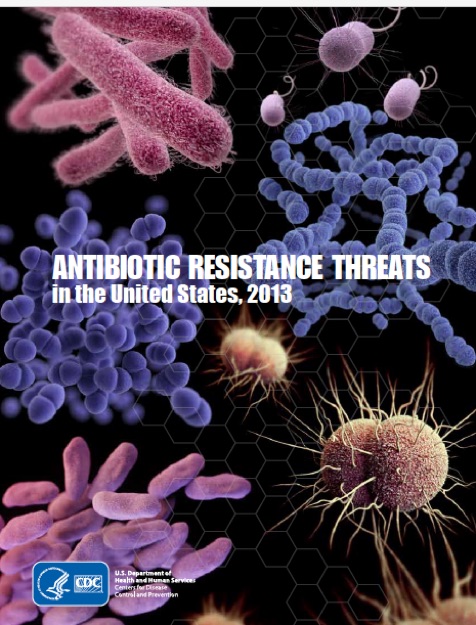

Sub-Objective 2.4.4: Collect quantitative data on antibiotic resistance and management practices along various points at pre-harvest, harvest, and processing stages, in collaboration with producers and other stakeholders, and disseminate information as appropriate.
Within one year:
•• USDA will develop a plan for expanded monitoring of resistant bacteria throughout the food production continuum (e.g., pre-harvest, harvest, and processing of food products).
On-farm sampling will be voluntary.
Within three years:
•• USDA will implement collection of data on antibiotic-resistance and management practices during pre-harvest, harvest, and processing of food products. On-farm sampling will be voluntary. This information will be used to monitor trends in drug-resistant bacteria and identify potential mitigation strategies for further investigation.
•• USDA will begin coordinated investigations of emerging zoonotic antibiotic resistant pathogens on the farm and at slaughter.


"CDC estimates that in the United States, more than two million people are sickened every year with antibiotic-resistant infections, with at least 23,000 dying as a result. The estimates are based on conservative assumptions and are likely minimum estimates. They are the best approximations that can be derived from currently available data."
The CDC Report had as its aim to provide, "a snapshot of the complex problem of antibiotic resistance today and the potentially catastrophic consequences of inaction.The overriding purpose of this report is to increase awareness of the threat that antibiotic resistance poses and to encourage immediate action to address the threat."
On March 2015 President Obama rolled out his
NATIONAL ACTION PLAN FOR COMBATING ANTIBIOTIC-RESISTANT BACTERIA, a multi-agency document from the Centers for Disease Control, the Food and Drug Administration, the Department of Defense, the U.S. Department of Agriculture, and the EPA. Click on the address at right to go to the Plan.
The action plan sets up data gathering and centralized databases for hospital detection of patients colonized with antibiotic resistant bacteria but takes baby steps to encourage voluntary animal testing on CAFOs infected by epidemic disease and spawning antibiotic resistant bacteria and mutated zoonotic viruses.
The centrality of intensive livestock operations as reservoirs of mutating disease pathogens is obscured in the Presidents Plan though plenty of peer reviewed literature has been establishing the connections. For example, The 2013 CDC Report came after a 2008 John Hopkins Study and a letter from, Robert Martin of the PEW Commission on Industrial Farm Animal Production.The PEW fellows called for a more radical and far reaching overhaul of industrial livestock practices. They found:
“The present system of industrial food animal production is not sustainable. . . the system presents an unacceptable level of risk to the public health and damage to the environment, is harmful to the animals housed in confinement systems and detrimental to the long-term economic activity of the communities where they are located.”
Under the Obama Plan taxpayer money will pour into the industrial livestock protection system to protect the confidentiality of infected CAFOs that report infection. While CAFOs hide their epidemics, the resulting antibiotic resistant bacteria diseases in the human population at hospital are detected, tracked and pooled in databases. Nowhere is President Obama calling for closing down mega-CAFOs either on moral grounds of their cruel treatment of animals or on public health grounds of their track record of distributing contaminated meat and transporting sick animals. Though the PEW study called for phasing out liquid manure systems and “enormous waste lagoons” none of that is in the Plan. The footprint of the USDA and the multibillion dollar CAFO industry is stamped on the Plan, stunting its public protection goals. Likely, the Obama Plan is more aggressive than what a Republican president would deliver. But the scientific community is warning that more protection is necessary. “The intensive confinement of animals is shown to be a major contributor to an evolutionary surge in influenza virus mutation.”
Ayasha Akhtar, The need to include animal protection in public health policies , J Public Health Policy. 2013 Nov; 34(4): 549–559.
“Largely because of increased demand for animal products, intensive animal operations have mostly replaced traditional farming practices worldwide, particularly for pigs and poultry.5 The stress and distress associated with these new farming conditions heightens animals' vulnerability to disease.”
President Obama in releasing the Plan said:
“We've set some aggressive goals. First, we're going to slow the emergence of resistant bacteria and prevent the spread of resistant infections. Second, we're going to include surveillance; we want to know when it's happening and why it's happening. Third, we're going to develop better diagnostic tools. Fourth, we're going to accelerate research into new drugs. And, fifth, we're going to improve global coordination because this is going to end up being a global problem.”
Though the Plan doesn’t call CAFOs unsustainable or too big and dangerous to people and the environment, it sets goals to cut the unrestricted use of antibiotics in confined animal feed:
1.2 Eliminate the use of medically-important antibiotics for growth promotion in food- producing animals and bring other agricultural uses of antibiotics, for treatment, control, and prevention of disease, under veterinary oversight.
1.3 Identify and implement measures to foster stewardship of antibiotics in animals.
Within one year:
•• FDA will finalize changes to the Veterinary Feed Directive (VFD) regulation to encourage manufacturers to transition the dispensing status of in-feed antibiotics covered by GFI #213 from over-the-counter (OTC) to VFD status, which requires veterinary oversight. FDA will publish an enhanced summary report of antibiotics sold or distributed for use in food-producing animals from 2009 to 2013. This report will support the effort to monitor the antibiotic usage aspects of Guidance #213 (see also Objective 2.2.4).
Within three years:
•• FDA, in partnership with animal drug sponsors, will complete all changes recommended by GFI #213 and GFI #209. Once these changes are complete, growth promotion uses of medically
important antibiotics will no longer be permitted, and the use of medically important antibiotics in the feed or water of food-producing animals will require veterinary oversight
The emergence of anti-microbial resistant infectious bacteria is proving an unmanageable threat. Governments seem unable to commit to lower CO2 emissions because of the multi-billion dollar marketplace in energy resources. In a democratic governed capitalist state, the wealth is overwhelming and controls how the media presents critical issues and what inconvenient truths are buried. The powerful state based livestock producers have organized to blunt effective legislation to define the threat of CAFOs or impose sufficient regulation to prevent disease outbreaks. Rapidly mutating bacteria and viruses pose a lethal threat to human populations in a system of food production that protects profits above public health.
CSPAN
see Congressional
committee hearings
Chart from the CDC Report
In Iowa in May 2015, as avian influenza virus, is spreading across the U.S., prompting prophylactic liquidation of 40.7 million turkeys and chickens, and, as Porcine Epidemic Diarrhea Virus (PEDv) killed 8 million hogs in 31 states since April 2013, yet industrial livestock investors are planning to build 40 new hog CAFO barns. Two new hog slaughter houses each amounting to a $ 250 million capital investment are to be built. Each will kill and cut up more than 10,000 hogs every day. Iowa has declared a state of emergency as piles of dead chickens overwhelm state and federal resources to safely dispose of carcasses. These facts fill news articles in Sioux City and Des Moines.
The profit seekers within the industry, the politicians that depend on re-election using donations from the multi- billion dollar industry, and the captured regulators in the state and federal agencies would lose their profits, their jobs or their heads if they suggested the obvious–the basic confined animal model has to be discarded as too costly and too dangerous. So, the federal CDC, and USDA officers on point are walking a tightrope and hoping to avoid the finger of guilt pointing to them when the next inevitable viral pandemic mutates out of CAFOs miserable hordes.
As with most critical issues in America, public health and environmental sustainability are taking a back seat to capital investment priorities as a speculative bubble builds in the meat industry. The bubble may be bursting as the true cost to the public tax payers in governmental indemnity and environmental protection programs comes to light. Our public protection agencies are instead protecting “Big Meat” and both President Obama and Congress are doing too little to protect us from viral disease.
Hog meat is a $22.5 billion annual industry, accounting for 6% of total U.S. agricultural sales. In 1961, American’s annual per capita, meat consumption included 90 kilograms of meat, but as a result of sustained marketing and expansion by 2012, the amount was 120 kg/year. Global meat production went from 71 million tonnes in 1961 to 296 million tonnes in 2010, a four fold increase. By contrast, the outbreak of Severe Respiratory Syndrome SARS cost Canada and Asia $ 50 billion. A global influenza pandemic is expected to cost $ 3 trillion.
The industrial livestock system is sprawling and expanding even as its fundamental flaws are creating serious public health risk, and obligating tax payers to pay millions in indemnity payments for dead animals and later, billions or even trillions if CAFOs trigger a global human viral pandemic.
Corrupt Science:
Confined Animal Operations are spreading and increasing the risk of a global virus pandemic
(c) May 25, 2015 Bud Hixson
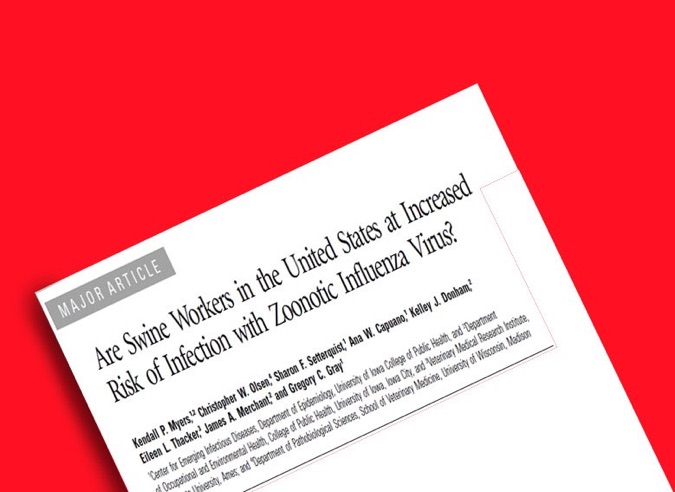
“Conclusions. Occupational exposure to pigs greatly increases workers’ risk of swine influenza virus infection.
Swine workers should be included
in pandemic surveillance and in
antiviral and immunization strategies.
Clinical Infectious Diseases 2006; 42:14–20
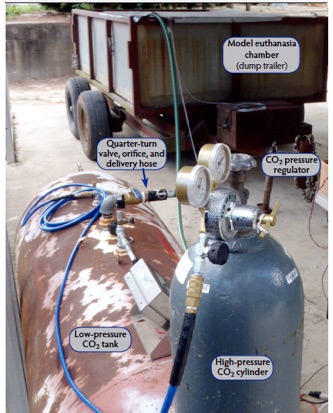
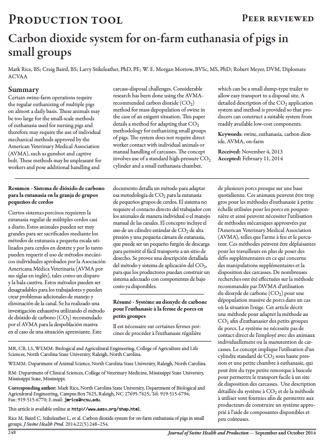
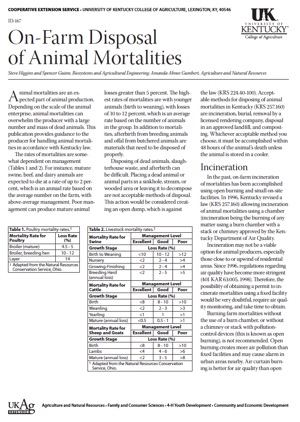
“Most human infections with avian influenza viruses have occurred in
people with direct or
close and prolonged
contact with
infected birds.”
Dr. Alicia Fry
CDC 2015
It is now established by researchers, that giant, crowded animal barns designed for maximizing investor profits, multiply the opportunity for zoonotic virus and anti-biotic resistant bacteria to spread in herds and jump the species barrier to humans. Crowding mammals in concentrated camps gives virus and bacteria easy avenues of transmission.
Interspecies spread in the first instance is directly to the human beings handling the animals--the CAFO workers, veterinarians, transport drivers and finally slaughterhouse workers. They take the virus and bacteria home and spread it to their family and neighbors. But virus can spread even from airborne particulate, through wild birds, bats, cats, and other pets. In fact, the main lesson of the 2014-2015 CAFO epidemics is, the millions spent on heightened ‘bio-security’ measures to limit the transmission between farms--have been a failure. Despite stringent chemical decontamination protocols of people and trucks, and placing CAFOs off limits to all but a few workers, the avian influenza spread to 14 states in 5 months, and corona virus rapidly spread to 31 states. The conduit from confined animals to humans is established beyond recall by the industrial livestock model.
We cannot adopt the willful blindness of corrupt leaders, or be diverted by colorful advertising, and fall silent in the face of agricultural livestock practices that dispose of the dignity that all life is entitled to claim. When millions of animals are ‘depopulated’ by ‘foaming crews’ the public needs to debate whether industrial agriculture has turned a dangerous corner.
“The viruses primarily associated with upper respiratory tract infections commonly include rhinoviruses, enteroviruses, adenoviruses, parainfluenza viruses (PIV), influenza viruses, respiratory syncytial viruses (RSV) and coronaviruses [3,8,14,15].
In recent years six new human respiratory viruses have been reported including human metapneumovirus (hMPV) [16], bocavirus and four new human coronaviruses including Severe Acute Respiratory Syndrome coronavirus (SARS-CoV), human coronavirus NL63 (HCoV-NL63), HCoV-HKU1 and Middle East Respiratory Syndrome coronavirus (MERS-CoV). “
Identification of New Respiratory Viruses in the New Millennium, Michael Berry
Viruses 2015, 7, 996-1019
__________________________________
"For centuries, the evolution of the influenza virus had remained relatively stable. In recent years, however, the virus has undergone an evolutionary surge, with new variants emerging rapidly. The intensive confinement of animals is shown to be a major contributor to this surge. "
"Plant-based diets can reduce the number of animals confined in industrial farms and further decrease emergence of zoonotic pathogens. Such diets also confer environmental and personal health benefits."
Ahktar, et al, The need to include animal protection in public health policies,
J Public Health Policy. 2013 Nov; 34(4): 549–559.
__________________________________
The H5N1 avian influenza virus that has recently spread rapidly to several continents and infected millions of wild birds and domestic poultry has the potential to become the next pandemic strain.
With so much attention upon H5N1 infections among avian species, it is easy to forget that swine may play a role in pandemic influenza strain generation and transmission. Such was the case during the 1918-1919 pandemic
Saenz et al, Confined Animal Feeding Operations as Amplifiers of Influenza
Vector Borne Zoonotic Dis. 2006 ; 6(4): 338–346.
"The crowding of swine and poultry in CAFOs increases the transmission of influenza viruses. Occupational exposure to pigs has been shown to increase the risk of swine influenza virus infection in humans (Myers et al. 2006,Olsen et al. 2002). Thus, CAFO workers could serve as a bridging population for transmission of an influenza virus between a local human population and animals in CAFOs."
Saenz et al, Confined Animal Feeding Operations as Amplifiers of Influenza, Vector Borne Zoonotic Dis. 2006 ; 6(4): 338–346.
____________________________________
"The morbidity and fiscal implications associated with respiratory infections are significant, with approximately 500 million cases reported in the United States alone each year with subsequent direct and indirect costs to the US economy estimated at $40 billion annually."
Berry et al, Identification of New Respiratory Viruses in the New Millennium,
Viruses 2015, 7, 996-1019
____________________________________
"Our results indicate that pigs can be a source of IAV infectious aerosols and that these aerosols can be exhausted from pig barns and be transported downwind. The results from this study provide evidence of the risk of aerosol transmission in pigs under field conditions."
Corzo, et al, Airborne detection and quantification of swine influenza a virus in air samples collected inside, outside and downwind from swine barns.
PLoS One. 2013 Aug 8;8(8):e71444.
____________________________________
"Staphylococcus aureus can colonize pigs and can be emitted via ventilation systems into the ambient air of swine herd confined- animal feeding operations. The results of our longitudinal study demonstrate that MRSA can be isolated from ambient air and also from soil surfaces in the vicinity of pig farms."
Schulz, et al, Longitudinal Study of the Contamination of Air and of Soil Surfaces in the Vicinity of Pig Barns by Livestock-Associated Methicillin- Resistant Staphylococcus aureus, Applied and Environmental Microbiology p. 5666–5671 August 2012 Volume 78 Number 16
“Iowa's robust agricultural economy — leading the nation in pork and egg production — presents a challenge dealing with manure generated by more than 20 million hogs and 60 million chickens, although the flock in the last month has shrunk by 40 percent from a deadly strain of bird flu.
It's also tops in corn production, a crop that needs an abundance of nitrogen fertilizer to maximize yields. Yet, the nutrient can leach into rivers, causing high nitrate levels. It also can leach into lakes, contributing to toxic algae blooms."
Polluted Iowa waterways rise 15 percent in 2 years, David Pitt, Associated Press 2015
___________________________________
Chinese officials estimate that the Chinese pig population is 700 million, with an annual mortality rate of 2.5% ; this extrapolates to Zhejiang province needing to process approximately 200,000 carcasses annually, and this is a number that might not be contained by the state’s processing pits. . . dead pigs were found floating on the Liuyang river in Hunan province.
This explosive industrialization of the pork market will raise environmental and public health issues: one needs to remember that waste products from small farms and even larger units may not be disposed of hygienically, particularly when the promise of rapid profit is at stake for previously impoverished populations."
Pappas, Socio-economic, industrial and cultural parameters of pig-borne infections
Clinical Microbiology and Infection, Volume 19 Number 7, July 2013
___________________________________
"Porcine Epidemic Diarrhea Virus (PEDv) has spread rapidly through the United States swine herd since initial diagnosis in spring 2013. By May 2014, it had been identified in 29 of the contiguous states."
The cost of porcine respiratory virus infections is estimated at $664 million annually in the U.S. (now 31 states)
___________________________________
Newly emergent viruses like the SARS outbreak in Hong Kong in 2003 killed 700 people and now the Middle East Respiratory Syndrome virus MERS-CoV is spreading insidiously and without symptoms in host animals though it has claimed some 300 lives.
___________________________
Khan, A novel coronavirus capable of lethal human infections: an emerging picture, Virology Journal 2013, 10:66
http://www.who.int/zoonoses/en/
Any disease or infection that is naturally transmissible from vertebrate animals to humans and vice-versa is classified as a zoonosis.


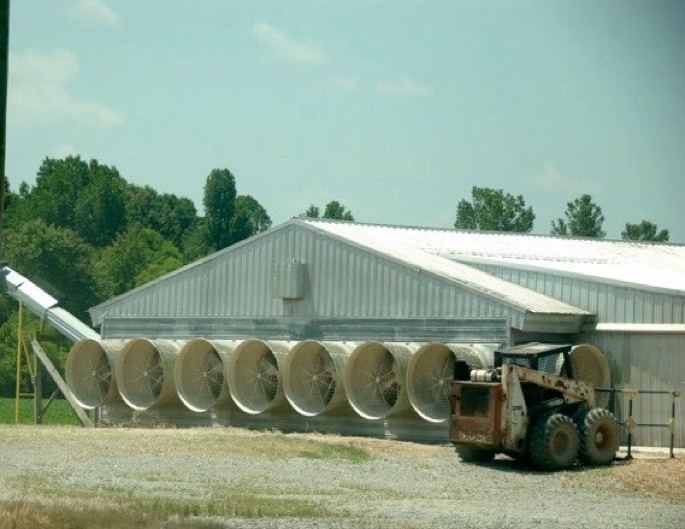



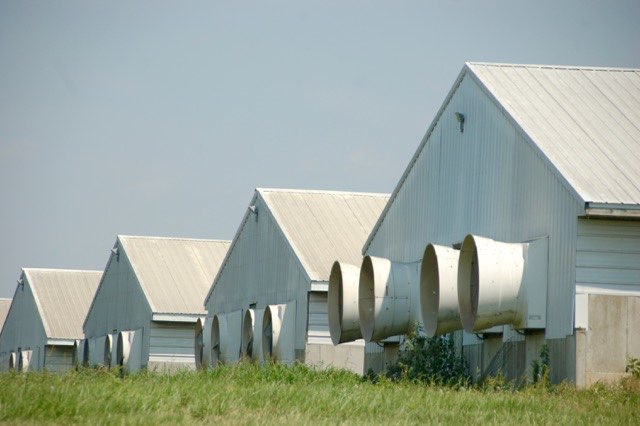
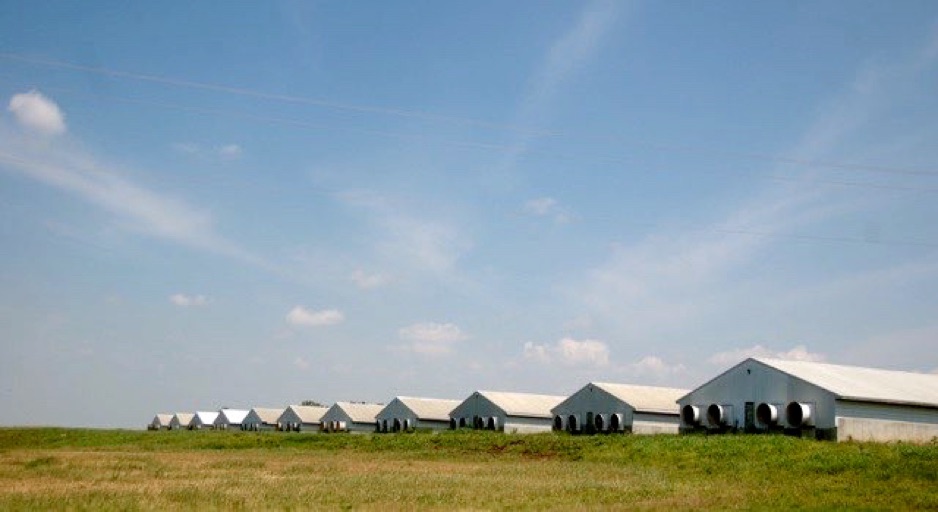


Louisville, KY (c) June 8, 2015 Bud Hixson
Among the most ludicrous doctrines we employ to bolster our existential courage is the notion that we are superior to animals. Where some tribes once revered the spirit, power and courage of animals, we have fallen into thinking of them as protein. There is established in human society, in law, religion and practice, a great inequality between the protected rights of people and the minimal rights accorded to animals.
The Bible verse Genesis 1:26, codifies human superiority over animals. But this fable merely ratified the then- existing practices, of capturing, herding, sacrificing and slaughtering animals.
“Then God said, "Let Us make man in Our image, according to Our likeness; and let them rule over the fish of the sea and over the birds of the sky and over the cattle and over all the earth, and over every creeping thing that creeps on the earth."
Genesis 1:26
http://biblehub.com/genesis/1-26.htm
A deep vein of carnality–of blood letting– runs through humans. When we aren’t killing each other, killing animals as ceremony and for food creates social relations and elevates social status. But in a de-humanized consumer society, the ‘circle of life’ is reduced to Disney cartoons. The real creatures are reduced to cold cuts. Unreflective meat eating is the norm and an industry objective. Christian dogma co-exists quite happily with this reptilian urge and with the oceans of animal blood we let each year.
God’s pronouncement at the time was surely custom-fitted for a post-Eden population of 2 (Adam and Eve). But, with a world population exceeding 7 billion, the one or two pigs per year Adam and Eve consumed have today become 110 million hogs per year in the U.S. Genesis 1:26 says nothing about, ‘ye shall feed hogs brewer’s solids and buildeth factories to slaughter millions.”
Total meat and poultry production in 2012 in the U.S. was 92.9 billion lbs. Faced with an exploding global population, superior people are forced to consider the mass inefficiency of using 450 gallons of water to make just one hamburger patty versus only 250 gallons to produce a pound of dried rice.
Obviously, as superior beings we would not tolerate herding some unfortunate group of refugees into rows of barns by the thousands for short, overfed lives, to live naked on grillwork over a pit of their feces and to be subsequently hauled in trucks to be slaughtered? The dogma of superiority blinds us to the suffering of other species and our resident carnality drives a gluttony for cheap meat.
The emergence of infectious zoonotic viral diseases from the miserable waste cesspools of CAFO animals is a ‘dark cloud on the horizon.‘ But, reordering food production towards sustainability and for respect for the natural tights of animals, may be beyond our capacity.
CAFO animals are deemed mere profit units, they are crowded into confinement barns where fecal-oral transmission of pathogens is favored. When a CAFO individual is infected, the pathogen sweeps through the herd infecting thousands of animals. Virus adheres to worker’s boots, gets lodged in worker’s lungs, splattered on trucks and tires, formed into food pellets and rides dust particles. Exhaust fans blow the dust into the air where wild birds or neighbors inhale pathogens.
The factory farm model in Kentucky based on being granted a KNDOP permit to spread virus contaminated manure on open fields is due for a revisit. With factory farms sprouting “Bio-security” warning signs and limiting on site traffic to trucks that have been decontaminated with detergent and power-sprayers –continued land application of manure in adjacent fields doesn’t make sense. The level of bio-security required in the mass operation is not practically attained and risk is exported to the landscape.
Wild birds have abundant opportunity to land in manure contaminated fields, to drink from virus contaminated puddles and then transmit the virus across states and between continents.
Exhaust ventilation blowers used for air temperature control on swine and poultry barns, blow live virus into the environment onto cars and people. With the emergence of a new SARS or MERS virus or the arrival of avian influenza and its possible mutations, the barn design in current use poses a public health risk. The current confined livestock operations are infecting workers with viral pathogens and in return, the workers are infecting the animals with viruses they carry.
The consensus of disease pandemic experts is that CAFO confinement conditions make a pandemic from an emerging pathogen a matter of ‘when’ not ‘if.’ But, in public policy, the money talks, and nothing but an actual crisis can turn the ship of state.
“In all, companies involved in meat production, along with their suppliers, distributors, retailers and ancillary industries employ 6.2 million people in the U.S. with jobs that total $200 billion in wages.
Through direct taxes paid, these companies and their employees provide $81.2 billion in revenues to federal, state and local governments. The consumption of meat and poultry generates $2.4 billion in state sales taxes.
The meat and poultry industry's economic ripple effect generates $864.2 billion annually to the U.S. economy, or roughly 6% of the entire GDP.”
The photos to the right are taken in June 2015 in central Kentucky near Central City at a large swine CAFO and elsewhere at a large poultry operation. The local operations do not appear to be following rigorous bio-security measures but we saw no piles of dead piglets or chickens though the PEDV epidemic has infected a number of swine operations in this state.
Trying to get the public to reduce meat eating is like trying to get lampreys not to suck fish. We should ditch the Bible’s blanket authority to exploit all the creatures we share the planet with. That teaching and the global industry spawned from it, contaminate the mindscape and befoul what could be an earthly Paradise.
Corrupt Science:
You cannot be superior to animals when you treat them like pigs
Bickett Hog Farm off county road 175 near Central City Kentucky
Bickett Hog Farm aerial
Cal-Maine poultry barn near county road 181
Open sided poultry cage transport
Truck loading hogs

Human pandemics and industrial meat production
Confined Animal Feeding Operations increase viral pandemic risk
(c) June 23, 2015 Bud Hixson
As recounted by Gina Kolata in her 1999 book, FLU-The Story of the Great Influenza Pandemic of 1918, the lethal infection was rapid and devastating:
“Your face turns dark brownish purple. You start to cough up blood. Your feet turn black . . . as the end nears you frantically gasp for breath . . you die by drowning as your lungs fill with reddish fluid. When the doctor does an autopsy, he will observe your lungs lying heavy and sodden in your chest, engorged with a thin bloody liquid, useless like slabs of liver. “
Kolata, Page 4 “The Plague Year”
This description closely matches the description of forensic dissections of piglet intestines in the Porcine Epidemic Diarrhea viral outbreak that started in the U.S. in 2013. The corona virus attaches to epithelial tissue in the intestines of the swine and in 2 days, rapid replication causes the cells to explode releasing viral replicants. The cell function is destroyed where the virus attacks, whether respiratory or enteric.
Pandemic disease control becomes a race to develop new vaccines that block viral attachment to cells. But the virus is always mutating the molecular conformation of its ‘receptor spikes’ with some mutations changing the transmission efficiency and lethality. Rapidly transmitted virus with high lethality spread quickly and kill millions before the six months time required to develop vaccines.
Mass crowding of mammals in confined animal feeding operations provides an optimum environment for new and lethal viral mutations. The current pandemic in U.S. poultry and swine operations is like a smoking cigarette dropped on a stack of dynamite. It hasn’t blown yet--hasn’t crossed the species barrier with a new human pandemic –but virus is likely already implanted and mutating in CAFO workers from contact with dead and dying birds or swine.
The 1918 Pandemic broke in September in virulent form. But earlier, in April both swine and humans endured a milder ‘three day flu’ that rapidly infected millions but was not lethal.
The later pandemic flu may have emerged from swine and killed both humans and people.
“Recall that during the 1918–1919 human influenza pandemic, there were concomitant US swine herd die-offs (likely from the virus) that caused much economic hardship.”
Meyers et al, Are Swine Workers at Increased Risk of Infection with Zoonotic Influenza Virus?
Clinical Infectious Diseases, 2006; 42:14–20
CAFO operators are dealing with dangerous, endemic zoonotic viral infections in their herds. Now they are attempting to adopt impossibly stringent bio-security protocols to be followed by minimum wage and possibly undocumented farm laborers, who must breathe the same air and handle the manure of sick animals.
Prognosticating when a human viral pandemic will break is made impossibly difficult by multiple complex factors. However, identifying existing circumstances and factors that greatly increase the likelihood, is quite possible. Many authorities have already decried CAFO crowding as a dangerous practice.
Virus pathogens circulate between human and animal hosts and a mass die off caused by lethal virus in animals indicates a new lethal mutation in receptor spikes that could cross the species barrier to humans.
Despite, the evidence of zoonotic transmission amassed and presented to legislators since at least the 1918 influenza viral pandemic, public policy in industrial livestock has permitted and enabled dangerous swine and poultry concentration to expand unchecked.
From about 1965, the U.S. government failed utterly to apply the lessons of the pandemic history to curb corrupt livestock science to avoid assembling concentrated disease risk.
The major agricultural interests successfully lobbied to exempt the CAFOs from Clean Water Act Pollution discharge permits that would have required secondary treatment of millions of gallons of virus enriched effluent before release to the landscape and waterways. Land application of manure was limited only by nutrient management plans that ineffectively controlled phosphorus and nitrogen.
The risk of land application of virus containing manure is now understood to include promoting anti-biotic resistant bacteria and potentially lethal viruses. Yet the lobbyists are influencing legislation and policy to focus on reporting disease outbreaks rather than breaking up concentrated animal herds and their millions of tons of untreated manure.
“During the past 60 years, the US swine industry has changed in composition from primarily small herds on family farms to include immense herds in large, corporate facilities.”

Wikipedia
https://en.wikipedia.org/?title=Pandemic
Human Disease Pandemics
1346-1353 Black Death Plague
75 - 200 million deaths in Eurasia
Yersinia Pestis bacterium
1889 ‘Russian Flu’
1 million deaths
thought to be influenza virus
1918 Swine or ‘Spanish Flue’
500 million infected with H1N1 virus
50 million deaths (or 2X that)
‘swine influenza’ pigs became sick
1957–58 ‘Asian Flu’
H2N2 flu virus
70,000 U.S. deaths
2 million global
1968 ‘Hong Kong’ Flu
34,000 deaths U.S.
1 million global
1998 “swine flu was found in pigs in four U.S. states. Within a year, it had spread through pig populations across the United States. Scientists found this virus had originated in pigs as a recombinant form of flu strains from birds and humans. This outbreak confirmed that pigs can serve as a crucible where novel influenza viruses emerge as a result of the reassortment of genes from different strains.”
2002-2003 SARS Corona virus 774 deaths
$ 40 billion economic cost
2009 Swine Flu H1N1
61 million infected
12,470 deaths
2015 the instances of Swine Flu substantially increased to five year highs with over 10,000 cases reported and 660 deaths in India
2013 - present Porcine corona virus and avian influenza pandemics in animals euthanize 8 million swine in U.S. and 48 million poultry
The evidence suggests CAFO operations are costing the nation millions of dollars per year in lost work days, hospital costs and dead animal indemnity payments. The private profits of big meat have overwhelmed effective public health protection.
The potential for animal-to-animal transmission among pigs in a swine confinement operation will be much greater than on a traditional farm because of the pigs’ crowding (resulting in prolonged and more frequent contact).
Meyers et al.
“Because CAFOs tend to concentrate large numbers of animals close together, they
facilitate rapid transmission and mixing of
viruses. There is a concern that increasing the numbers of swine facilities adjacent to avian facilities could further promote the evolution of the next pandemic.”
The Potential Role of Concentrated Animal Feeding Operations in Infectious Disease Epidemics and Antibiotic Resistance,
Environmental Health Perspectives VOL. 115 No. 2, February 2007.
CAFOs use unsafe manipulations of animal biology to force rapid meat production using the least number of workers and cheapest possible feed. Transporting infected animals through communities and on highways makes a new pandemic a matter of ‘when’ not ‘if’.
US Department of Agriculture, National Agricultural Statitstics Service. Historical data. Available at: http://www.usda.gov/nass/pubs/hist data.htm.
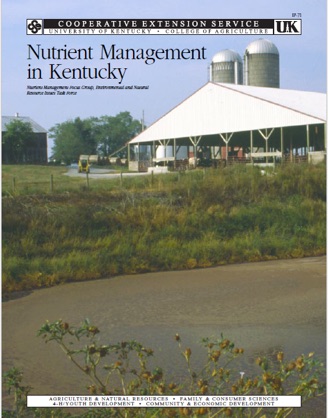

Manure management plan prepared for Ragland Farms KNDOP permit and submitted to the Kentucky Division of Water.
Page 37 contains the single reference to pathogens in CAFO manure:
3.2 Bio-security measures:
“Biosecurity is critical to protecting the health and well-being of livestock operations. Visitors must contact and check in with the producer before entering the operation or any production or storage facility.”
3.3 Catastrophic Mortality
Management
In the event of a catastrophic mortality event, the Office of State Veterinarian will be immediately contacted for instructions on how to best manage and dispose of catastrophic mortalities.”
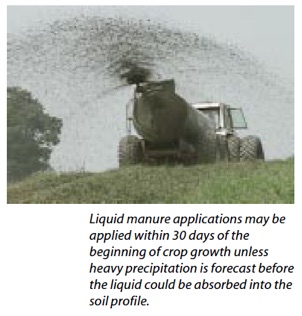
Unpublished Kentucky Court of Appeals case
Adams v. Commonwealth Energy & Environment Cabinet, Nos. 2009-CA-002190-MR, 2009-CA-002325-MR, May 25, 2012
Caperton, Judge:
Upon review of the applicable law and arguments of the parties, we note that this issue also turns upon the Cabinet's exercise of its special condition authority pursuant to 401 KAR 5:005. As previously explained herein, we believe this authority to be almost entirely discretionary and, thus, not appropriately disturbed absent an action on the part of the Cabinet that is clearly arbitrary. A review of the record reveals that such was not the case sub judice. The record indicates that the Farmers' permits in fact contain numerous conditions designed to prevent runoff of manure and otherwise control pathogens.
These conditions include requirements that the Farmers: (a) prepare and implement nutrient management plans; (b) inject the manure produced at their facilities four to six inches into the soil; (c) apply the manure in accordance with the setbacks included in their operating permits; and (d) maintain buffer strips around manure retention structures, animal holding areas, and land application areas to prevent soil erosion and runoff of manure.
Further, we note that expert testimony submitted on behalf of the Farmers indicates that injection of the manure into the soil as opposed to a surface application will create a hostile environment for pathogens, because of aggressive soil microbes.
Moreover, and importantly, we note that the permits issued to Farmers in this matter were No-Discharge permits. Because the permits at issue are No-Discharge permits and not KPDES permits, a discharge cannot be assumed.
“Since swine have been shown to be susceptible to infection with both avian and human IAV strains, this host species has
been considered a prime ‘‘mixing vessel’’ or intermediate host for the generation of IAVs of pandemic potential to humans.
The mechanisms by which avian IAVs cross species barriers to infect humans or other mammals, either causing dead-end
infections or leading to subsequent transmission in the novel mammalian host, are unknown. Moreover, the properties of
IAVs that have the greatest medical and public health relevance, such as human infectivity, transmissibility, and pathogenicity, appear to be complex and polygenic and are poorly understood. “
Jeffery K. Taubenberger, and John C. Kash, Influenza Virus Evolution, Host Adaptation, and Pandemic Formation,
Cell Host & Microbe Review, Vol. 7, 440
June 2010.
“The past decade has demonstrated how difficult it is to contain HPAI outbreaks, given high intensity poultry production and the movement of poultry between countries. The H5N1 viruses are likely to remain enzootic in domestic bird populations in many countries indefinitely. This poses numerous agricultural and economic problems. While it might provide an opportunity for H5N1 viruses to acquire efficient human-to-human transmission (if such a change is in fact
possible), it might, on the other hand, provide a better opportunity for viruses to adapt to poultry and wild birds, the chief spill-over hosts.”
J.K. Taubenberger and D.M. Morens, Pandemic influenza – including a risk assessment of H5N1,
Rev Sci Tech. 2009 April ; 28(1): 187–202.

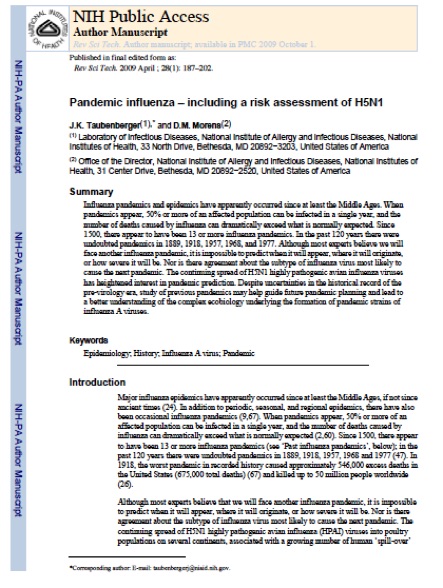
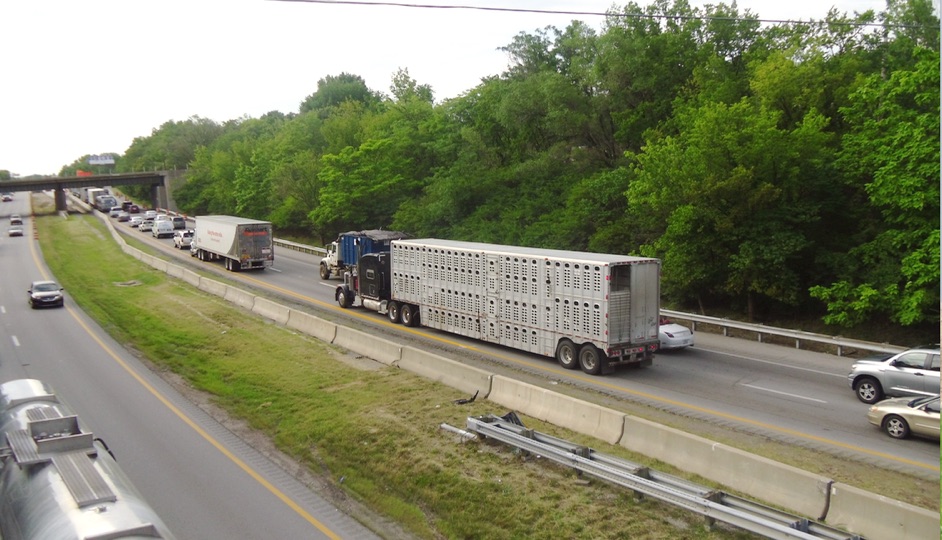

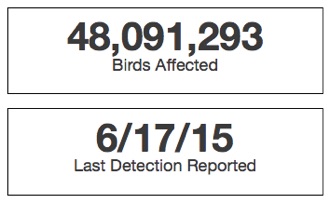
Update on Avian Influenza Findings
Poultry Findings Confirmed by USDA’s National Veterinary Services Laboratories
Congresss asks questions about Influenza Pandemic possibilities HERE
